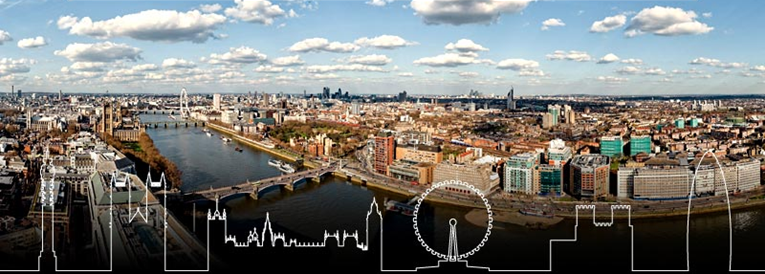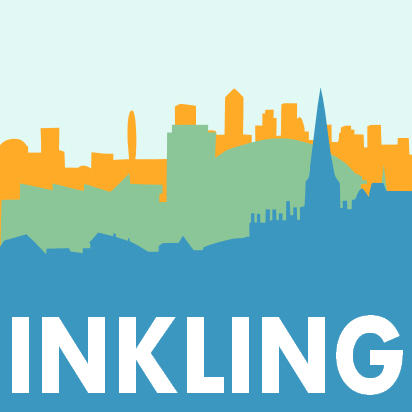Inkling @ #CIBSESymposium 2015
At Inkling both Susie and Claire made contributions to the organising of the CIBSE Technical Symposium 2015. We were keen to attend the two-day event event at UCL, and have taken this opportunity to write up and share our experience of it.
Sergio Fox (Architecture without Engineers) opened the event with an interesting and entertaining talk exploring the path that Danish design philosophy has taken over the past 30 years from simplicity to complexity and back again and what we can learn from that. His call for intelligent simplicity was echoed through the next two days. One memorable quote was from an Economics book from the 70’s (Small Is Beautiful: A Study of Economics as if People Mattered) where Schumacher said “You can’t pursue infinite growth on a finite planet”.
Another theme of his talk was that simulation was not good enough (yet) and can act as a barrier to good vernacular architecture which can’t always be modelled, we bristled a bit at this given what we do for a living, but actually do agree that modellers need to be wiser about how they use simulation.
Some of the main themes of the symposium that we picked up were:
BREEAM – is the box ticking leading to over-complicated buildings and not rewarding simpler ones (that actually work)? There seems to be a growing number of voices expressing this concern, and an increase in simpler tools for assessing buildings credentials including Voluntary DECS (VolDecs). Also, praise for the Australian NABERS (Everybody needs good NABERS) scheme.
Climate Based Daylight Modelling was covered in an excellent talk from John Mardaljevic (Loughborough Uni) entitled ‘Climate based daylight modelling and its discontents’.
The big question is whether the extra complexity within the calculation is helpful enough to justify the extra calculation resource? The jury seem a bit mixed on this one – we’re yet to be swayed one way of the other although it does make sense to factor in orientation and weather when calculating daylight, and this might help to reduce the tension between the twin drivers to meet daylighting requirements without admitting excessive solar gains. We are watching this space.
Performance Gap(s) – despite some notable impressive efforts, performance gaps widely persist and many voiced the opinion that this reflects very badly on the built environment as an industry – we have to reduce the gaps to more justifiable proportions to maintain our credibility as professionals.
Benchmarks – there were several calls for improved benchmarking information for currently neglected sectors including hotels and entertainment venues – maybe this is something that Carbon Buzz can help with.
Notable speakers included:
James Ramsden from Bath Uni who spoke on using tensegrity, Rhino, Grasshopper and Honeybee (what a menagerie!) to get closer to the pareto front (Google it). This was largely a presentation about parametric design, but in a very engaging style.
Isabel Why (ex Inkling, now Co-create) presented her ingenious ideas to link up national curriculum topics, by teaching school children more about the energy performance of their own school buildings, with POE and careers information about engineering. She talked about using Iris technology to film classrooms in action and then get the children to record levels of distraction in the class and correlate it with the temperature in the room, and had them reading meters and understanding the lack of wisdom in operating adjacent heating and cooling emitters simultaneously.
Julie Godefroy (Hoare Lea) – Julie gave a delightfully honest case study of an unnamed boutique hotel in London. She was candid enough to admit that it was hard to know how well it was performing as despite having a great deal of performance data there are very few relevant benchmarks to compare it to. There was mention of the successful installation of a well sized CHP system, although sadly the contractor omitted to install the thermal store and modulation equipment which rather undermined its usefulness. One particularly inspired aspect was the use of TripAdvisor to undertake post-occupancy evaluation.
Luke Ramsay of Julie’s Bicycle discussed benchmarking the cultural sector and improving the current CIBSE benchmarks, which he considers out of date and overly generous, using ‘IG’ tools to gather the data. Setting better benchmarks should encourage all stakeholders to raise their game.
Michael Lim of AECOM and Steve Harper of Galliard Homes presented a case study of a dwelling development, which performed much more poorly than anticipated at the design stage due to excessive district heating heat losses, underperforming MVHR units, too much glazing, lack of solar shading and an oversized biomass boiler, which is never turned on. This goes back to the first talk on too much complexity – a simpler solution would have been more robust.
In summary we got a lot out of this year’s symposium; it was a great opportunity to meet a lot of interesting people, talk shop and hear what others have been up to. Also – the food was good (mostly) and the view from the 29th floor of Millbank tower was most impressive!

View from Altitude at Millbank tower where the evening event was held. (http://altitude360black.rsvpstudio.com/)
Many thanks to all the organisers for a great event – looking forward to Edinburgh 2016!
You can pick up more perspectives on the event via Twitter using #CIBSESymposium.
 Posted by Susie Diamond
Posted by Susie Diamond- Posted in CIBSE, Claire Das Bhaumik, Events, Susie Diamond
 Apr, 21, 2015
Apr, 21, 2015 Comments Off on Inkling @ #CIBSESymposium 2015
Comments Off on Inkling @ #CIBSESymposium 2015

 Susie: 07972 263 676
Susie: 07972 263 676
 Join Us On In.com
Join Us On In.com
